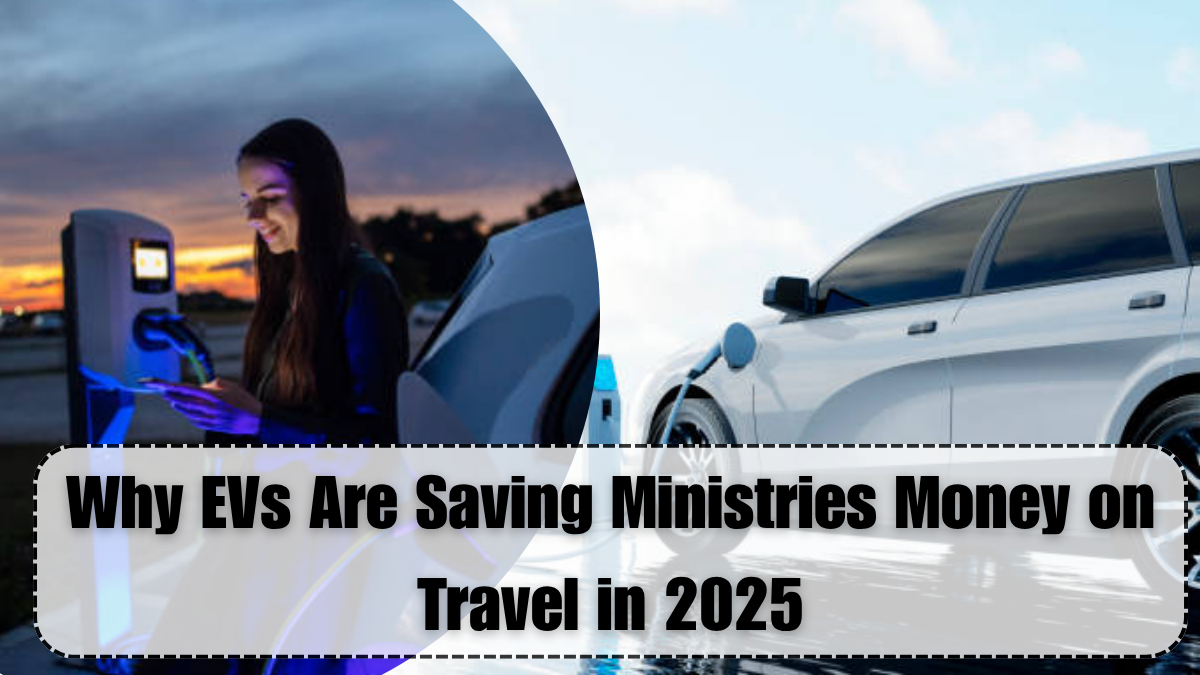Churches and ministries in 2025 are discovering a financial blessing in the form of electric vehicles. With fuel prices rising and maintenance becoming more expensive, the shift to ministry travel costs & EV savings is a logical—and impactful—move. From rural gospel trips to daily staff commutes, EVs are helping religious organizations save thousands while supporting eco-conscious missions.
For years, diesel vans and petrol cars were the norm in faith-based outreach. But now, a clear travel cost comparison reveals that electric vehicles are not only cheaper in the long run but also align beautifully with ministry values of stewardship and efficiency.

Comparing EVs vs Diesel Vehicles for Church Travel
Let’s break down the real-world travel cost comparison between electric vehicles and traditional diesel vehicles used in ministry:
| Factor | Diesel Vehicle (Monthly Avg) | Electric Vehicle (Monthly Avg) |
|---|---|---|
| Fuel/Charging Cost | ₹18,000 | ₹4,000 |
| Maintenance & Repairs | ₹6,000 | ₹1,500 |
| Insurance & Permits | ₹3,500 | ₹2,500 |
| Total Monthly Cost | ₹27,500 | ₹8,000 |
Ministries that have switched to electric transport have reported up to 70% cost reduction in monthly vehicle-related expenses.
Real Ministry Use Cases of EV Savings
Several churches in India, the US, and the UK have already experienced the benefits of ministry EV savings:
-
Victory Outreach Ministries (Delhi) replaced two diesel vans with EVs and saved over ₹2 lakhs in a single year.
-
Bethlehem Gospel Center (Texas) uses an EV bus for youth events, cutting their fuel bills by more than half.
-
Grace Tabernacle Church (Birmingham) saved on routine maintenance by switching to EV scooters for neighborhood outreach.
These examples prove that ministry travel costs & EV savings are more than just theory—they are a daily financial reality.
Why Ministries Are Choosing EVs in 2025
There are several reasons why faith-based institutions are making this important switch:
-
Fuel efficiency: EVs cost significantly less to run per kilometer
-
Low maintenance: No engine oil, fewer moving parts, and rare breakdowns
-
Government subsidies: Churches qualify for EV incentives in many states
-
Long-term value: High return on investment over 3–5 years
-
Alignment with values: Caring for creation through cleaner transport
For ministries focused on long-term impact, ministry EV savings are reshaping budgeting and planning.
How EV Adoption is Reshaping Budget Priorities
By reducing their ministry travel costs, churches are now able to redirect funds toward more meaningful purposes:
-
Community food drives
-
Youth programs and scholarships
-
Infrastructure upgrades like solar panels
-
Local and global missionary work
-
Health camps and elder support services
This shift supports the overall mission of the church while delivering concrete financial benefits.
Building a Sustainable Ministry Model
As travel is a recurring cost in ministry life, the adoption of EVs lays the foundation for a sustainable ministry model. Ministries investing in:
-
EV vans for group travel
-
E-bikes for door-to-door outreach
-
Charging stations powered by solar energy
-
Shared church EVs across departments
are becoming models of innovation, stewardship, and financial wisdom.
FAQs
How much can ministries really save using EVs?
Many churches report ministry EV savings of up to 60–70% compared to diesel or petrol vehicles.
Are EVs reliable enough for long-distance outreach?
Yes, modern EVs have long ranges, and many are ideal for both urban and rural outreach missions.
What types of EVs are most commonly used by ministries?
Ministries use EV vans, electric buses, e-scooters, and shared electric cars based on their specific needs.
Can small churches afford EVs in 2025?
Yes. With subsidies, low EMI plans, and second-hand EV markets, even small churches can benefit from travel cost comparison savings.
Do EVs require less maintenance than traditional vehicles?
Absolutely. EVs have fewer parts, no oil changes, and much lower maintenance costs.
Click here to know more.
